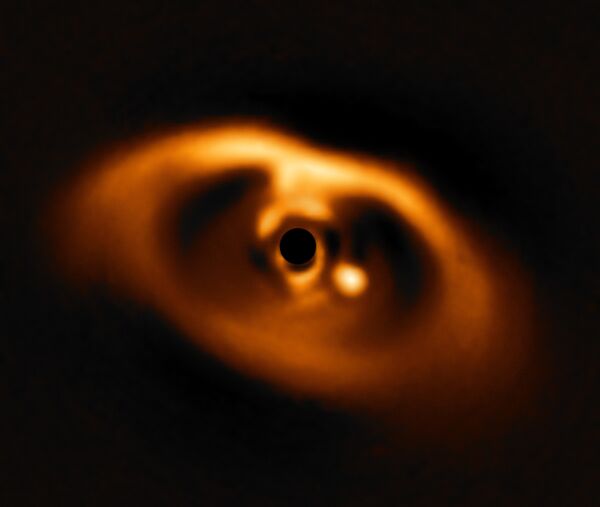The image, which was captured by the Sphere instrument of the European Southern Observatory's Very Large Telescope in Chile, shows a bright blob travelling through the disks of PDS 70, a star estimated to be just five to six million years old, Space.com reported. The distant star lies about 370 light-years from Earth.

"These disks around young stars are the birthplaces of planets, but so far only a handful of observations have detected hints of baby planets in them," Miriam Keppler of the Max Planck Institute for Astronomy in Heidelberg, Germany, and leader of the discovery, said in a statement. "The problem is that, until now, most of these planet candidates could just have been features in the disk."
The alien planet, which has been dubbed PDS 70B, is said to be some two to three times larger than Jupiter and situated some 1.9 billion miles from its star, placing it about as far from its star as Uranus is from our sun. According to Science Daily, the planet's surface has a sizzling temperature of roughly 1,832 degrees Fahrenheit — which is normal for newly formed planets, as they retain a large amount of heat from their formation.




